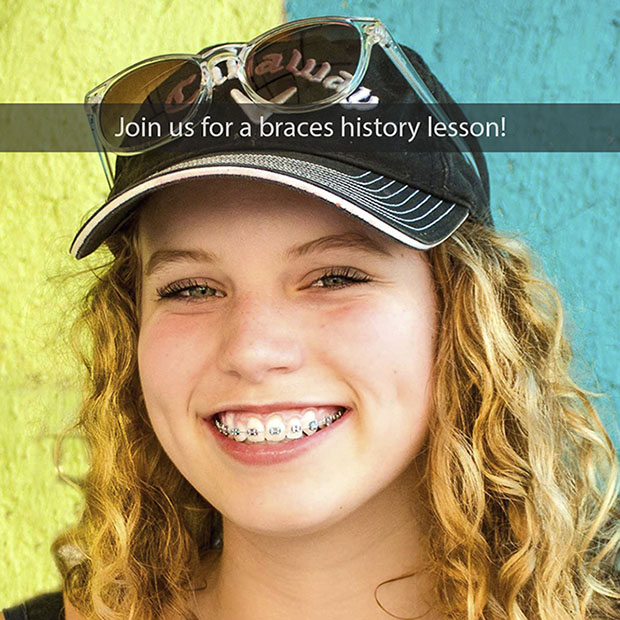Join Us for a Braces History Lesson!

Orthodontics dates back all the way to at least 400 BC.
In Rome, Aulus Cornelius Celsus theorized that teeth could be straightened by manually applying pressure. That’s not quite true, but we’ve come a long way since then.
Pierre Fauchard in the 1700s
Pierre Fauchard made the first significant progress in the 1700s with his invention of the bandeau, a horseshoe-shaped metal appliance with holes throughout it, held in place with silk threads. It was certainly a better idea than the one Delabarre had. He thought he could treat crowding by putting wooden wedges between teeth. Ouch!
Headgear in the 1800s
Headgear was first developed in 1822. Then, in 1880, Edward Hartley Angle formally identified different malocclusions (bad bites) and developed ways of correcting them.
Modern Advancements
Early orthodontists were limited by the technology of their time. There were no bonding agents to attach brackets to teeth until 1949 and had to use expensive metals until affordable stainless steel (1970s). Another major game-changer was invisible aligners in the late 1990s.
We truly stand on the shoulders of giants in the modern field of orthodontics, and we love that we can offer such effective and comfortable treatment to our patients.
